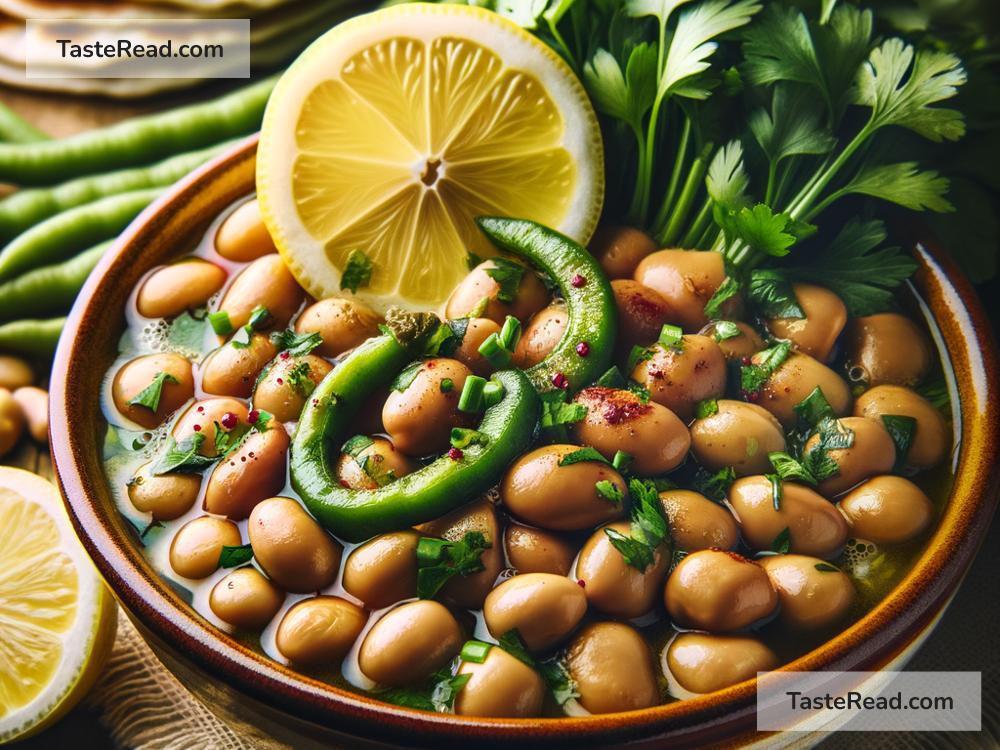How the Egyptian Fava Beans Became a Cultural Staple
Imagine waking up to the bustling streets of Cairo, the air fragrant with the scent of spices, and the most welcoming aroma of all – freshly cooked fava beans. This is not just a breakfast scene in Egypt; it’s a glimpse into a tradition that stitches the fabric of Egyptian culture. The fava bean, known locally as ‘ful medames’, is more than just a food item in Egypt; it’s a cultural staple, a historical legacy that Egyptians have embraced and cherished through millennia.
A Journey Through Time
Fava beans have been embedded in Egyptian culture since ancient times, with a history that dates back to the pharaohs over 4,000 years ago. Yes, you read that right – four millennia! These beans were not only a source of nourishment for the ancient Egyptians but were also entombed with the dead as sustenance for the afterlife. This indicates the profound significance and reverence they held for ful.
As civilizations evolved and the sands of time reshaped Egypt, the fava bean continued to be an essential part of the diet. When resources were scarce, these beans emerged as a lifesaver, providing crucial nutrients to the masses. It was this reliability and richness in nutrition that cemented fava beans’ place in the heart of Egyptian culinary traditions.
A Culinary Marvel
Fava beans are incredibly versatile in Egyptian cuisine. The most famous dish, ful medames, is a deceptively simple yet profoundly flavorful meal. Full of history and taste, this breakfast staple is traditionally made by slow-cooking the beans in a pot, seasoned with garlic, lemon juice, and olive oil, and often garnished with fresh herbs, chopped tomatoes, and onions. It’s a hearty, healthy start to any day, combining the rich flavors of Egypt in every bite.
The Social Fabric of Egypt
But ful is more than just food; it’s a social glue that brings people together. From street carts and local markets to family homes, the aroma of cooking fava beans is a call to gather and share. It doesn’t matter if you are rich or poor, young or old; ful medames is for everyone. This simple dish transcends social and economic barriers, uniting Egyptians in a shared culinary experience that is as much a part of daily life as the air they breathe.
Moreover, fava beans play a significant role during Ramadan, the holy month of fasting in the Islamic calendar. During suhoor, the meal consumed early before the sunrise, ful provides a long-lasting source of energy, helping the fasting individuals sustain through the day.
A Nutritional Powerhouse
Beyond its cultural and social significance, the fava bean is a nutritional powerhouse. Packed with protein, fiber, vitamins, and minerals, it’s a superfood that has sustained generations. For a country that has faced economic challenges and where meat can be a luxury, fava beans provide a critical source of affordable and accessible protein.
Embracing Tradition in Modern Times
In today’s Egypt, the love affair with fava beans continues unabated. While traditional preparation methods remain popular, modern culinary twists have also emerged, blending ancient recipes with new influences. Restaurants and food stalls are inventing creative ways to serve ful, from spicy ful dip to ful-flavored hummus, showcasing the versatility and enduring appeal of this ancient legume.
The Global Journey
And now, the fava bean is embarking on a global journey, finding its way into the hearts and kitchens of people around the world. With a growing interest in plant-based diets and sustainable eating, ful medames offers an enticing and wholesome option that’s both good for the planet and delicious.
In Conclusion, the Egyptian fava bean is more than just a meal; it’s a timeless treasure, a link to the past, and a beacon for the future. Its journey from the fields of ancient Egypt to the global stage is a testament to its enduring appeal and vital role in sustaining not just bodies, but the very soul of a culture. So the next time you savor the rich, hearty taste of ful, remember: you’re not just eating a dish; you’re partaking in a legacy that spans thousands of years, connecting you to the heart of Egyptian heritage.


